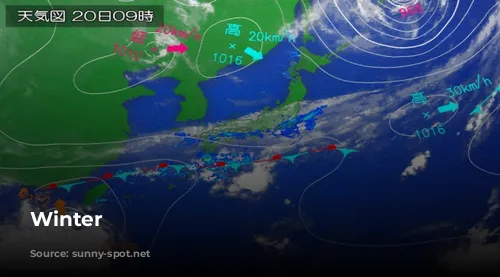Japan boasts a captivating tapestry of four distinct seasons, each painting a unique picture across its diverse landscape. From the subarctic chills of the north to the subtropical warmth of the south, Japan’s climate weaves a tale of contrasting weather patterns. Even within the same region, conditions can differ drastically between the Pacific side and the Sea of Japan side, creating a fascinating interplay of weather influences.
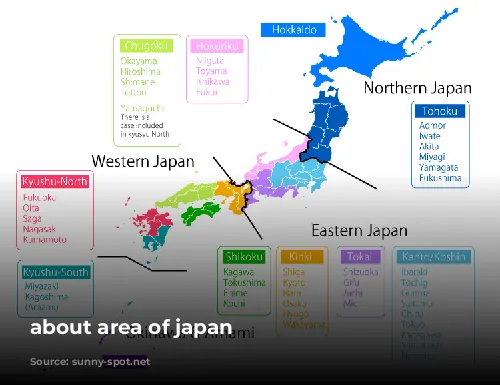
Winter’s Embrace: Snow-Kissed Landscapes and Siberian Winds
As winter descends upon Japan (December to February), a frosty grip takes hold, especially in the north. The Siberian High dominates the Eurasian Continent, while the Aleutian Low reigns over the northern North Pacific. These atmospheric giants drive prevailing northwesterly winds that carry frigid air from Siberia, blanketing the Sea of Japan side with heavy snowfall. The mountainous terrain amplifies this effect, creating a picturesque snow-covered landscape. Meanwhile, the Pacific side, shielded from the Siberian winds, enjoys sunny skies and relatively milder temperatures. The contrast is stark, with temperatures plummeting to -20°C in inland areas of Hokkaido while the Okinawa and Amami islands bask in the warmth of their subtropical climate.
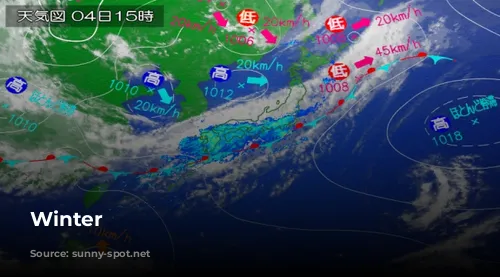
Spring’s Awakening: A Symphony of Change
With the arrival of spring (March to May), Japan transitions into a period of dynamic weather patterns. Migratory cyclones and anticyclones dance across the skies, bringing alternating periods of warm and cold air. The temperature fluctuates dramatically, rising in front of cyclonic systems due to the influence of warm southerly winds and dropping in the wake of anticyclonic systems as cold northerly winds sweep in. Spring is a time of gradual warming, with sunshine duration increasing in the second half of the season as anticyclonic systems become more prevalent. As the season progresses, the rainy season, known as the Baiu, arrives, marking a distinct shift in the weather.
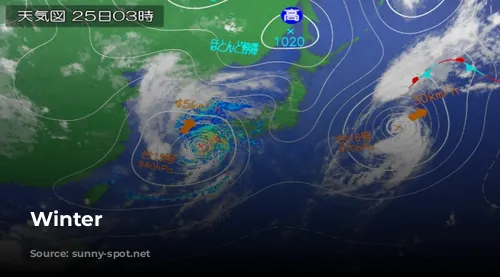
The Baiu: A Rainy Period of Early Summer
Early summer in Japan is synonymous with the Baiu, a period of consistent rainfall and overcast skies. Except for Hokkaido, the northernmost island, all regions experience this rainy season, which typically stretches from early June to late July. In the southernmost islands of Okinawa and Amami, the Baiu arrives and departs about a month earlier. The Japan Meteorological Agency (JMA) meticulously monitors the Baiu period, dividing the country into 12 areas and identifying a transition period of roughly five days to mark its start and end. While pinpointing the exact start and end dates can be tricky, the JMA provides climatological data based on averages from 1981 to 2010 to offer insight into the Baiu’s seasonal patterns.
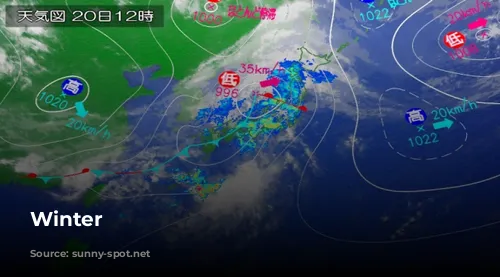
Summer’s Heat and the North Pacific High
The second half of summer sees the North Pacific High extend northwestward around Japan, casting a spell of hot and sunny days across the country. Western Japan, in particular, experiences temperatures that can soar to 35°C or higher. However, the Okhotsk High can occasionally emerge over the Sea of Okhotsk, bringing cool and moist easterly winds, known as Yamase, to the Pacific side of northern and eastern Japan, resulting in cloudy skies and rainfall. August sees a peak in the number of tropical cyclones approaching Okinawa and Amami, adding another layer of complexity to Japan’s summer weather.
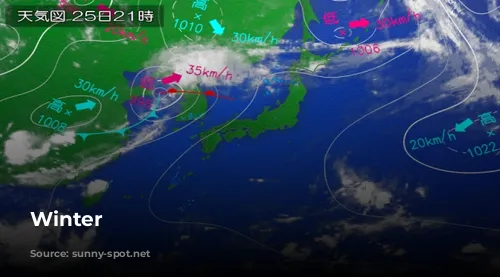
Autumn’s Transition: From Warmth to Cold
As autumn arrives (September to November), Japan begins its gradual transition back to cooler temperatures. September sees significant precipitation due to the active autumnal rain front and the lingering influence of tropical cyclones. October brings a welcome respite with frequent anticyclonic systems ushering in sunny days and refreshing air. The Sea of Japan side experiences an increase in cold northwesterly flows and precipitation (rainfall or snowfall) as November progresses, signaling the return of winter’s chill.
Japan’s climate is a captivating blend of contrasting influences, resulting in a rich tapestry of weather patterns across its islands. From the heavy snows of the Sea of Japan side to the subtropical warmth of the Okinawa and Amami islands, Japan’s diverse climate paints a dynamic picture of the four distinct seasons, captivating those who experience its ever-changing beauty.
